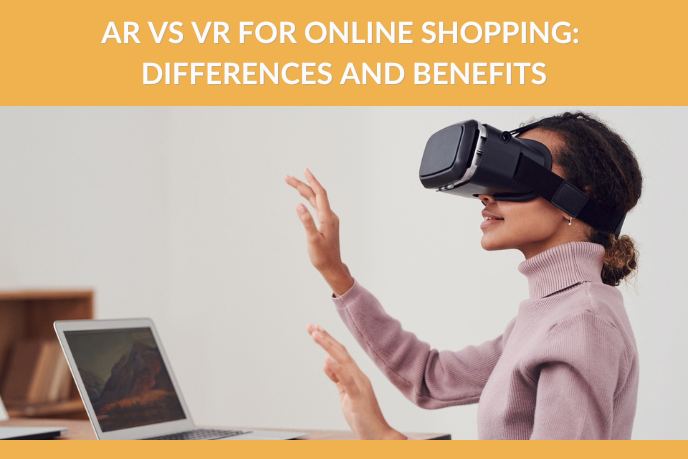AR vs VR for Online Shopping: Differences and Benefits for Customers
We live in an era where technological advancements are reshaping the way we interact with the world. And online shopping is no exception. Over the past few years, two technologies, augmented reality (AR) and virtual reality (VR), have emerged as game-changers in the ecommerce landscape.
As consumers increasingly turn to online platforms for their shopping needs, the demand for immersive and personalized experiences has never been higher. Both AR and VR offer unique solutions to address it, but understanding their differences and the benefits they bring is crucial for businesses looking to stay ahead in the competitive market.
In this exploration of AR vs VR for online shopping, we describe the distinctive features of each technology and uncover the ways they enhance ecommerce customer experience. Let’s dive in!
#1. Understanding Augmented Reality in Ecommerce
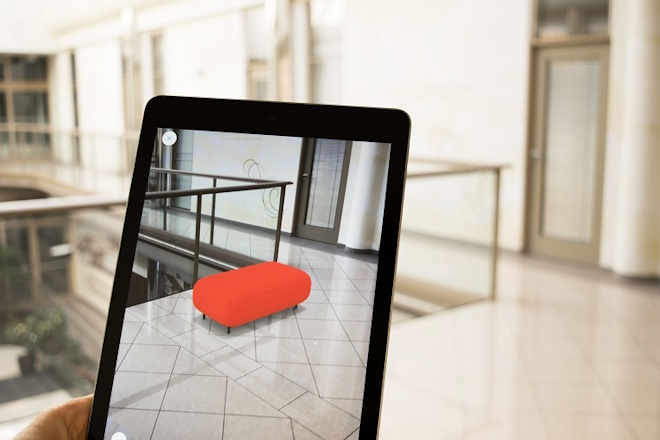
Augmented reality has revolutionized the online shopping experience. In essence, AR overlays digital content onto the real world through the screen of your device. Using this technology, any smartphone user can view a 3D model of a product in any space and take a look at it from any angle.
AR in online shopping comes in the form of fully interactive online catalogs. For instance, let’s take a look at the online retail giant Amazon. With the help of AR, the Amazon app enables users to visualize how a new couch or table would look in their living space before making a purchase. This hands-on experience, previously reserved for physical stores, brings a new level of confidence to online shoppers.
As a result, AR makes ecommerce much more engaging than its offline counterpart. It provides a personalized journey that ensures informed decision-making and makes the shopping process more effortless and exciting.
#2. Exploring Virtual Reality in Online Shopping
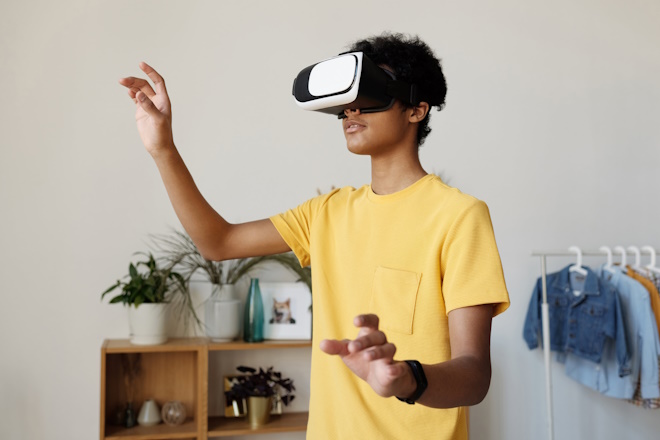
In comparison to AR, virtual reality immerses a person in a completely digital environment. In the context of online shopping, VR allows users to step into a virtual storefront. By putting on special headsets, users can explore products as if they were physically present, breaking down the barriers between the digital and real worlds.
VR provides a platform for immersive demonstrations that go beyond videos or images. Major brands have adopted VR to showcase their products in an interactive way. For instance, the BMW company offers virtual showroom tours. This allows a customer to explore various models of cars right from the comfort of home.
The immersive nature of this technology contributes significantly to customer confidence in making online purchases. By virtually interacting with products, shoppers gain a better understanding of their features and functionalities. This firsthand exploration minimizes uncertainty and hesitation, leading to fewer returns.
#3. AR vs VR for Online Shopping: What’s Better for Customers?
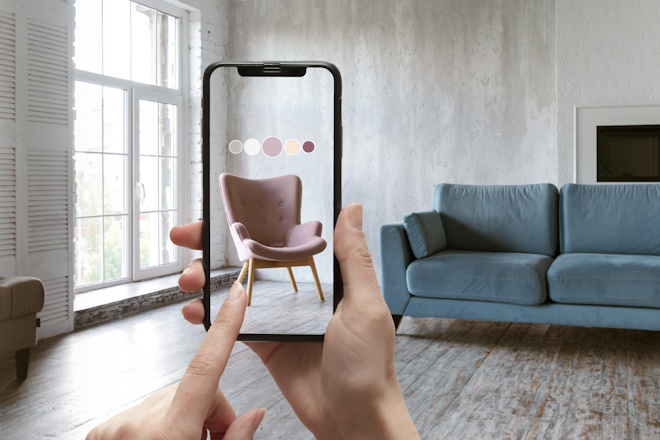
AR product visualization excels in providing practical real-world context. It allows people to see how an item fits in their lives before committing to a purchase. This is especially beneficial for items like clothing, furniture, or accessories, where it’s important to visualize a product in a real-life setting. What’s more, a new trend of smart mirrors has emerged in the fashion and beauty industries. They give customers the ability to try on different outfits and makeup via special reflective AR screens in a store.
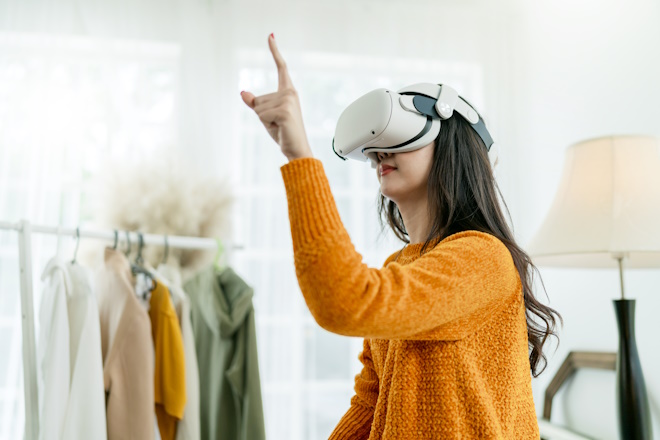
VR, on the other hand, focuses on creating immersive environments. It provides a digitally simulated in-store experience for the customer from the comfort of their home. It is ideal for customers who enjoy the tangible aspects of offline shopping. Besides, various brands have begun to incorporate unique VR experiences in physical stores for advertising purposes.
It should be noted that AR is more accessible. It doesn’t require any device apart from a smartphone, which everyone has nowadays. To access virtual reality, on the other hand, users need a VR headset, which can be quite costly.
In conclusion, the choice between AR vs VR for online shopping depends on the nature of the product and the customer’s preferences. AR enhances practicality and visualization, while VR delivers an unparalleled immersive experience. As technology continues to develop, it will become even easier to integrate both options in ecommerce. And that’s why manufacturers and retailers should really consider implementing these technologies.
Want to make your business more successful than ever before? Use our 3D modeling services and create unforgettable shopping experiences with AR and VR!
Let us know if you’ve got an interesting project and want to work together!

